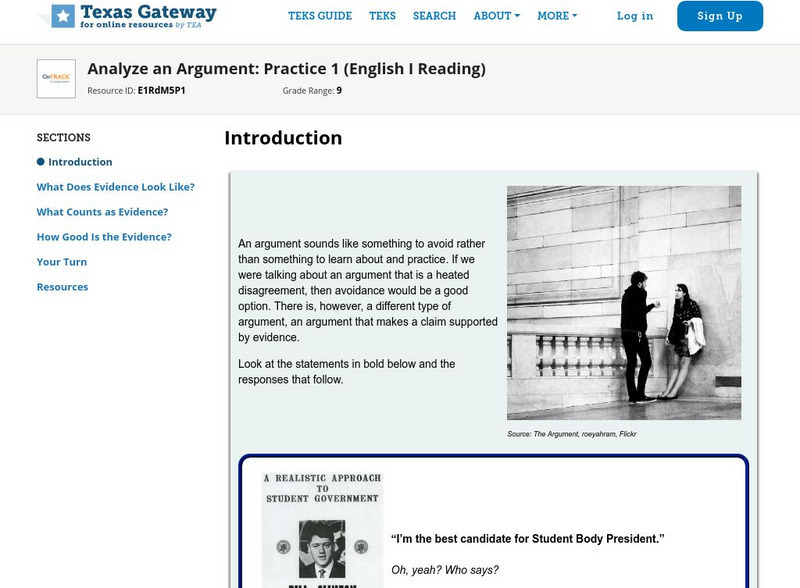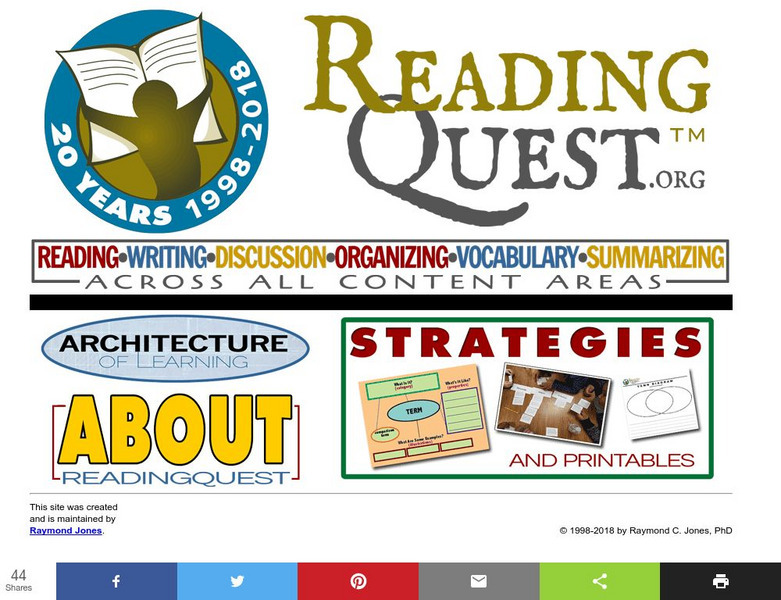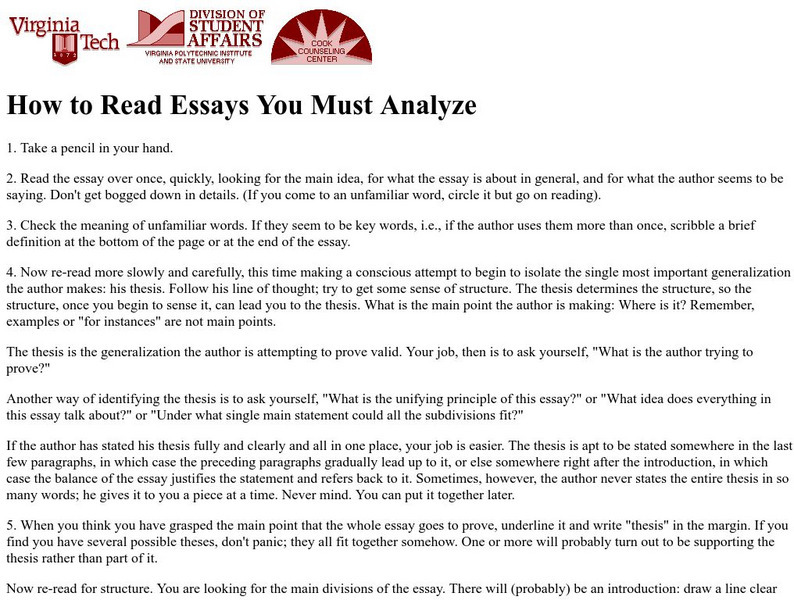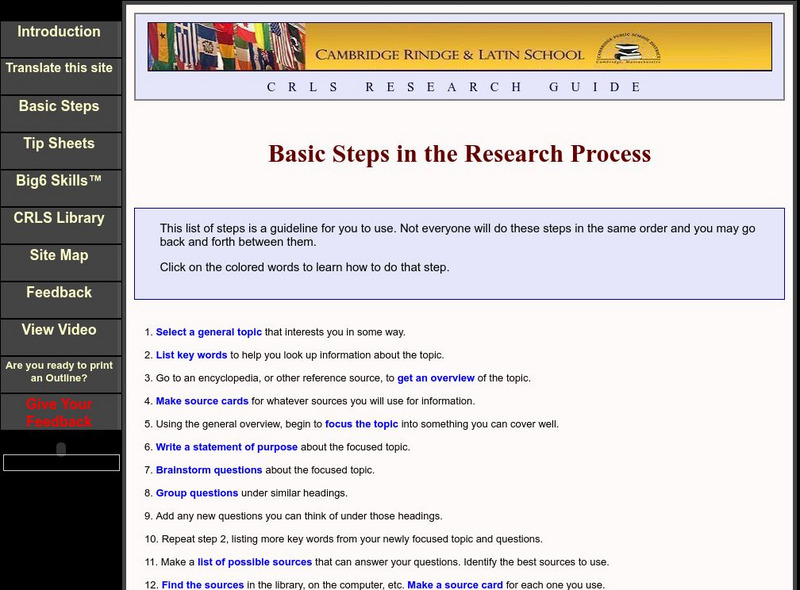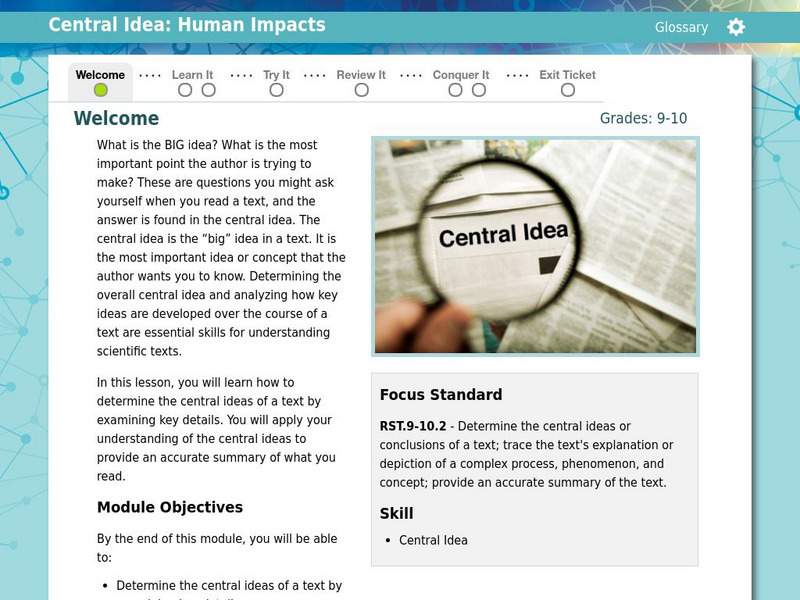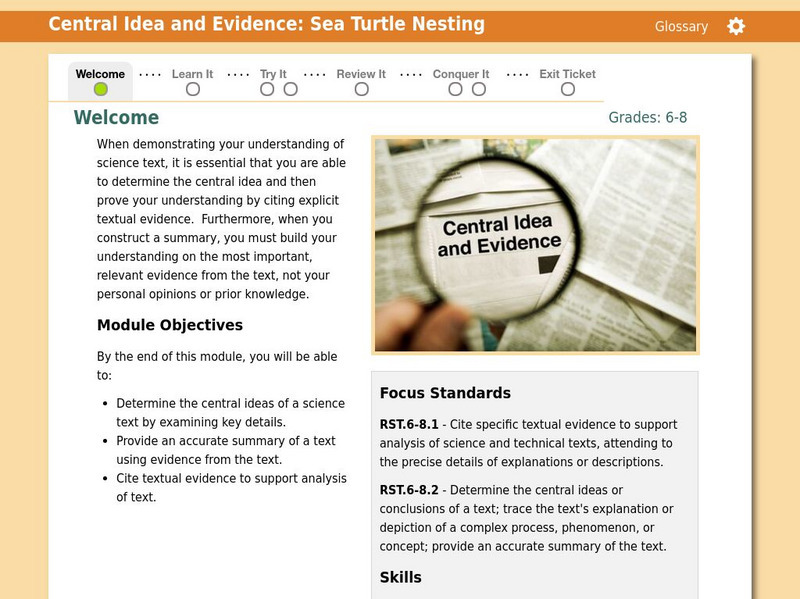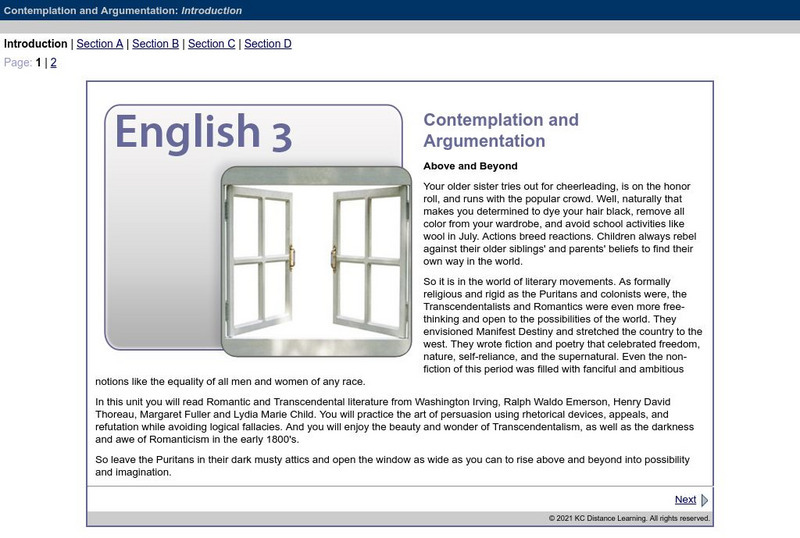University of North Carolina
University of North Carolina: Writing Center: Handouts: Evidence
What kinds of evidence best support the points you make in a paper? Where can you find the evidence you need? This handout answers all these questions and more, including the difference between primary and secondary sources. You'll also...
Sophia Learning
Sophia: Reading Comprehension and Classroom Discussions
This tutorial focuses on active reading comprehension strategies including reading aloud, taking notes, summarizing, and writing in the margins of books to improve retention and class discussion. It includes two Flickr videos on active...
Other
Responsible Thinking: Analyzing Arguments and Evidence
Contains many points to consider when analyzing someone's arguments and evidence, such as the hidden assumptions, cultural assumptions, and testability. Each is explained in a short paragraph with a link to additional discussions on...
Lumen Learning
Lumen: Using Sources: Building Credibility Through Source Integration
This instructional activity focuses on building credibility by properly integrating source materials. It discusses three ways of improving credibility through integration, provides an example, and a practice exercise. SL.9-10.2 eval...
Pennsylvania State University
Pennsylvania State University (Dr. Mc Clennen): How to Do a Close Reading
This guide is written for college students, but should be very useful for upper level high school students as well. The writer first describes fourteen steps to take in doing a close reading, then provides six pieces of advice on how to...
Other
Ncrel: Reading Strategies: Before, During, and After [Pdf]
This page provides a detailed chart to aid students' understanding of texts. It goes through the steps of pre-reading, during reading, and after reading, outlining what students should be thinking about as they interact with a text. This...
Stanford University
Stanford U.: Evaluating Information: The Cornerstone of Civic Online Reasoning
This report from the Stanford History Education Group describes the conclusions of their work in field testing a set of assessments of civic online reasoning by young people from the middle school to the college level. Middle school...
Other
Oslis: Research Process
Excellent site outlining each step for Internet research for grades 6-12. This site focuses on writing a research paper from selecting a topic through to the final paper. Click on Cite My Sources to get the electronic citation machines....
Texas Education Agency
Texas Gateway: Analyze an Argument: Practice 1 (English I Reading)
In this lesson, students practice analyzing the evidence that supports or opposes an argument. They are also going to learn to analyze the quality, relevance, and credibility of the evidence so you can decide whether to accept the...
Other
Reading Quest: Making Sense of Social Studies
Teaching students to read well in areas other than language arts requires teaching and reinforcing the kinds of reading strategies taught here. There are 27 strategies, ranging from brainstorming to word mapping. The site includes PDF...
Other
Time & Life Pictures: Defining Visions of an Enduring History
This database of images contains hundreds of photographs from TIME and Life Magazines from a span of over 70 years. This is a wonderful resource for the study of history, culture or photojournalism. Images are searchable by photographer,...
Sophia Learning
Sophia: Referencing the Author's Purpose
This lesson explains how to reference an author's purpose when answering a reading comprehension question. This tutorial shares an audio version of the lesson's content. [3:14] RI.11-12.6 Eval Purpose, Rhetoric, Style
W. W. Norton
W. W. Norton: The Research Essay: Integrating Source Material Into the Essay
Information about integrating source material into an research essay. SL.11-12.2 Eval&Integrate sources
Thinkport Education
Thinkport: Analyzing Data Sources and Author's Purpose: Electric Currents
In this science-themed literacy lesson, students learn how to determine the author's purpose and follow the development of that purpose.
Other
Santa Rosa Library: How to Evaluate Information Resources
Tips and information about how to evaluate resources, both print and electronic. Includes information about source authority, purpose, objectivity, currency, completeness, and relevance. It includes a printable handout (top right)with...
Virginia Tech
How to Read Essays You Must Analyze
Provides a detailed discussion on how to approach an essay for analysis.
Sophia Learning
Sophia: Critical Reading as a Learning Strategy
This tutorial focuses on critical reading using a downloadable PowerPoint presentation, "Critical Reading 101," which includes separating fact from opinion, 6 propaganda techniques, and 6 common fallacies in reasoning. Also provided is...
E Reading Worksheets
E Reading Worksheets: Text Structure Practice 1
This interactive worksheet provides 10 questions: each includes a reading passage which students read and select the patterns of organization used in each passage. RI.11-12.3 Text development
Cambridge Rindge & Latin School
Cambridge Rindge & Latin School: Basic Steps in the Research Process
A comprehensive list of the important steps in researching and writing a report or project. Includes links to tip sheets for each step.
Thinkport Education
Thinkport: Determine the Central Idea: Human Impacts
Students will learn how to identify the central idea of a text about human impacts by examining key details.
Thinkport Education
Thinkport: Central Idea and Evidence: Sea Turtle Nesting
Students practice finding the central idea and summary of a nonfiction piece about sea turtle nesting.
PBS
Pbs: Academic Vocabulary in the Common Core: Disciplinary Vocabulary
This series of four video segments features a social studies teacher and a chemistry teacher demonstrating the integration of academic vocabulary into their classrooms. These segments feature the incorporation of general vocabulary (Tier...
Department of Defense
Do Dea: Contemplation and Argumentation
In this self-guided unit, you will read Romantic and Transcendental literature and you will practice the art of persuasion using rhetorical devices, appeals, and refutation while avoiding logical fallacies. By the end of the unit, you...
Texas Education Agency
Texas Gateway: Distinguish Between Summary and Critique (English I Reading)
In this lesson, students will learn how to write an effective summary using reading strategies to help ensure that the summary contains enough information without including unnecessary details or personal opinions. You will also learn...


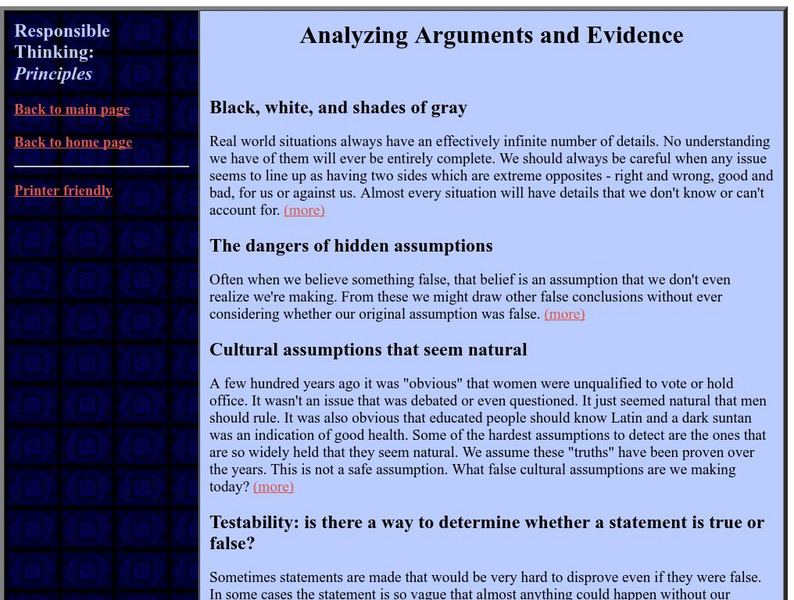
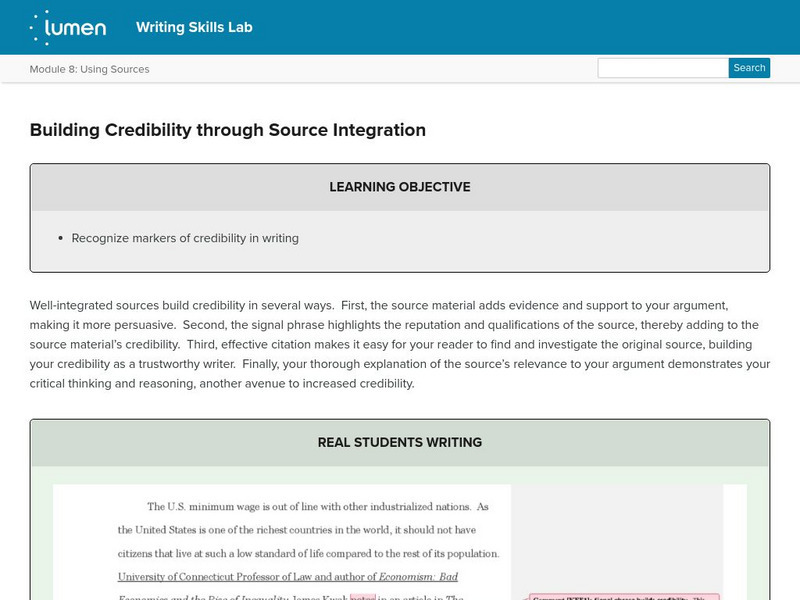

![Ncrel: Reading Strategies: Before, During, and After [Pdf] Graphic Ncrel: Reading Strategies: Before, During, and After [Pdf] Graphic](https://d15y2dacu3jp90.cloudfront.net/images/attachment_defaults/resource/large/FPO-knovation.png)

